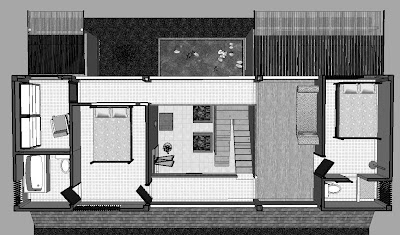 The hut in
Kenya, the longhouse on Borneo, the igloo on the ice, the Yurt (Ger) of
Mongolia, every dwelling is right at its place and inappropriate in any
other, or even completely wrong. Because most people today have lost the
feeling for a natural life-style, they believe it doesn't matter where
and how to build, as long as the façade is "nice” and the price is all
right. Unlike a piece of clothing however, which one can simply
exchange if not satisfied, the personal house is a cover you should make
more thoughts about, than about the plan to buy a coat.
The hut in
Kenya, the longhouse on Borneo, the igloo on the ice, the Yurt (Ger) of
Mongolia, every dwelling is right at its place and inappropriate in any
other, or even completely wrong. Because most people today have lost the
feeling for a natural life-style, they believe it doesn't matter where
and how to build, as long as the façade is "nice” and the price is all
right. Unlike a piece of clothing however, which one can simply
exchange if not satisfied, the personal house is a cover you should make
more thoughts about, than about the plan to buy a coat. Do you really want just any house off the rod, if you can have a tailor-made instead, exactly suiting your needs, an unique, a fitting one – a different? Before I came to Bali, I lived and worked in Germany, Afghanistan, Kenya and Sumatra. I collected my experiences moreover on extended trips, where I got acquainted with the construction in different cultures, traditions and climates. I felt and feel particularly drawn to the diverse traditional building methods of the tropics. I approve on an architecture preferably close to nature, serving the place and the people which appears nevertheless, fresh and alive.














































